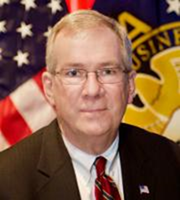HOME | ABOUT US | MEDIA KIT | CONTACT US | INQUIRE
HOME | ABOUT US | MEDIA KIT | CONTACT US | INQUIRE
Small Business Administration loans are a major topic right now in the face of COVID-19. Tom Salisbury, the Regional Administrator for SBA’s Region VII states of Missouri, Kansas, Nebraska and Iowa, talks about the Paycheck Protection Program (PPP) and other related issues,
Q: We’re almost two weeks into the execution of the Paycheck Protection Program to help employers retain people on their payrolls. Can you tell us about the challenges of implementing an initiative of that scale?
 A: We are in extremely unfamiliar territory, both as a country and as a federal agency. We’re in a unique position, doing this in conjunction with the Treasury Department. PPP is really not by definition an SBA program, it was designed and mandated by Congress, and we’re pleased to be part of it, but it also put Treasury and SBA in the same room. That’s fine, because the goal is to get funds in the hands of small business that are suffering monumental economic hardship.
A: We are in extremely unfamiliar territory, both as a country and as a federal agency. We’re in a unique position, doing this in conjunction with the Treasury Department. PPP is really not by definition an SBA program, it was designed and mandated by Congress, and we’re pleased to be part of it, but it also put Treasury and SBA in the same room. That’s fine, because the goal is to get funds in the hands of small business that are suffering monumental economic hardship.
Q: It came together awfully fast, didn’t it?
A: We rolled it out on April 3, had another phase on April 10, but previous to that, we had no infrastructure for that. I say that in the sense that the SBA is very structured and has a specific policy definition. There is a lot of SOP within SBA, followed by making relationships with small businesses and lenders. We’ve been asked to step away from that mostly to facilitate the delivery of these funds, and we essentially built out a new infrastructure in the space of six or seven days. It was monumental task, very tedious and arduous one, but we did it. We knew once we did that we would have gaps and questions asked that were not necessarily thought of when it was being built out. That’s been the case. There have been detailed questions as we began to be experience the nuances, and we’ve been responsive to those, but it’s been stressful to roll out. Businesses and lenders are going through stress.\
Q: But the money is moving out, correct?
A: As of 8:30 a.m. on the 14th, the agency had processed over 1 million loans–1,040,000 processed from 4,665 lenders across the country, from different stirpes and backgrounds; traditional banks, some non-banks. We have growth in the enormous amount of lenders into the system, using processes in a manner that is completely unprecedented, but it still comes to about $247 billion in approved loans in a pool of $350 billion.
Q: Even with the stresses on smaller companies, that has to be considered a success with that time frame, doesn’t it?
A: It’s going exceptionally well, but there still is occasional frustration with a lack of clarity with every question that wasn’t anticipated or so detailed we couldn’t necessarily write policy for it. We’re asking for clarity from two different agencies at the same time, so more eyes need to look at these as we make our way up the line. But the simple numbers suggest this has been enormously successful and will continue until we deplete those funds or Congress supports PPP with additional funding.
Q: Any sense on the likelihood of that?
A: The administration is advocating for additional funding, and we endorse that. If Congress can come to mutual agreement, our expectation is that it might happen. We already have anecdotal evidence this has been extremely helpful with businesses’ being able to maintain payroll. I still don’t know how that will all shake out.